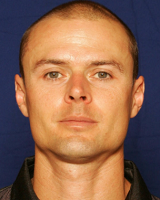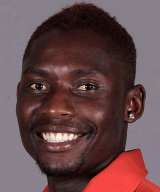_Ed_
Request Your Custom Title Now!
So I noticed that one of the umpires for today's Women's World Cup game was Alex Wharf, and I clicked on his profile to remind myself of what he did as a player. I was greeted with this.
Whoa. Any other hard-hitting profiles people can find?Wharf was called up to the England one-day side and made an immediate mark against India at Trent Bridge, taking the wicket of Sourav Ganguly with his fifth ball and striking twice more in an impressive opening spell. After this Wharf faded from the international scene due to a combination of injuries, loss of form and not being good enough.



